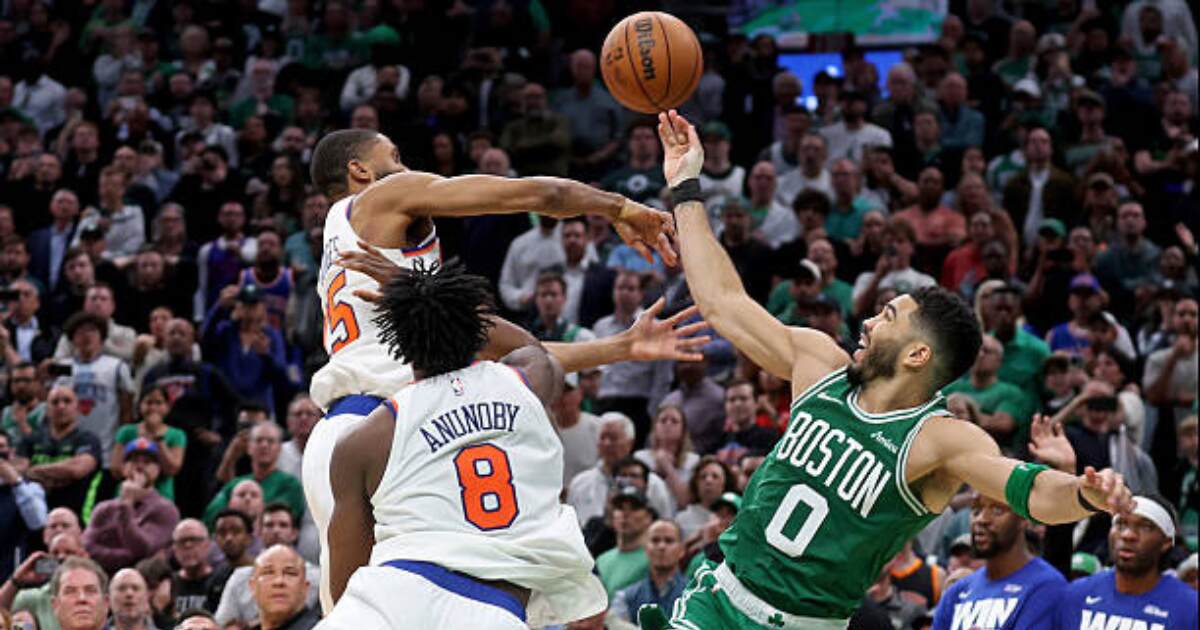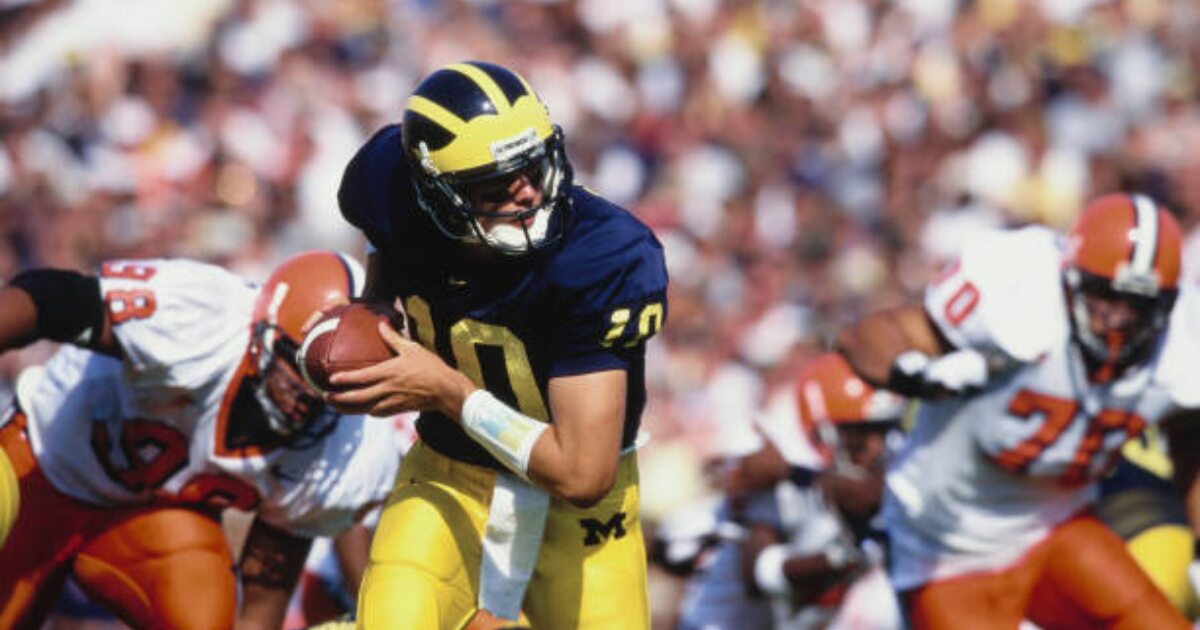About: NBA | NBA Games | NBA Games Today | NBA Schedule | NBA Playoffs | Cleveland Cavaliers | Miami Heats | NBA Finals | NBA live today | NBA Today | NBA Live | NBA Tickets | nbastore | NBA League Pass | NBA Draft:
2025 NBA Playoffs Roundtable What’s Going On: Six Road Wins. Two 20-Point Comebacks in 24 Hours. 87 Points in a Single Half. The 2025 NBA playoffs have delivered all the drama we could ask for: heart-stopping collapses, jaw-dropping performances, and a key injury to one of basketball’s all-time greats that’s left fans questioning both the present and the future.
We’re witnessing a postseason with narrative-shifting moments chaotic, thrilling, and, for some, a sign of divine basketball intervention. With each series now tied at one game apiece, it’s time to reflect on the storylines as we head into Game 3. Our staff has been asking:
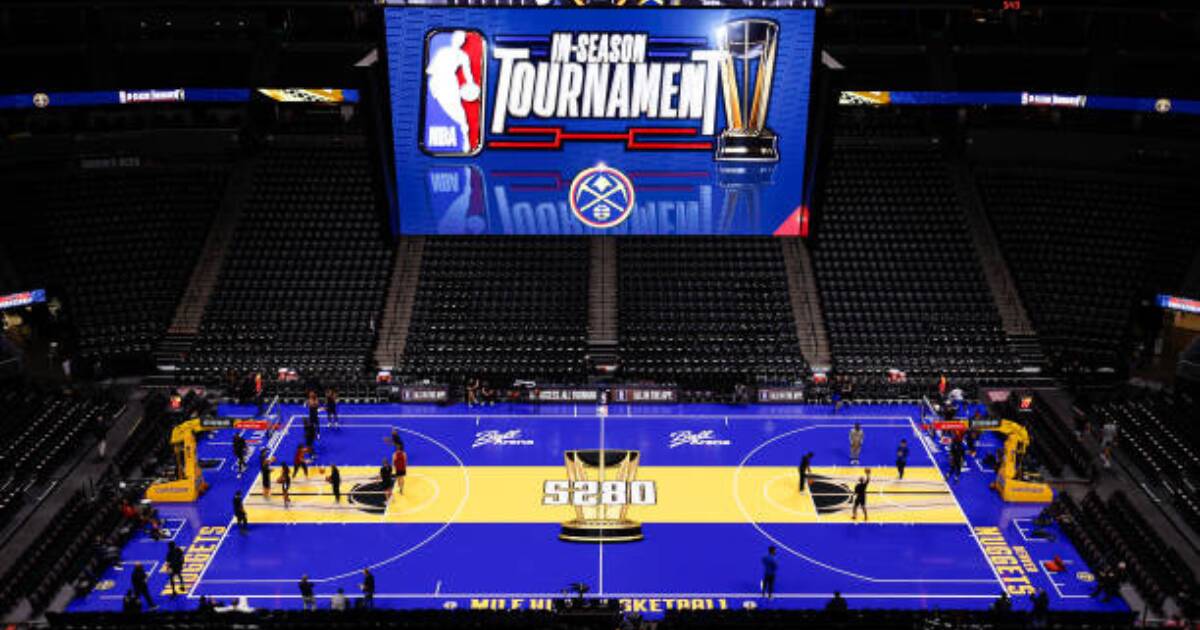
Are the Boston Celtics Finished?
Danny Chau: Losing two games that seemed to be under control is a serious blow to any team’s confidence, and these back-to-back meltdowns raise legitimate concerns for the Celtics. While there’s plenty of blame to go around for Boston’s second-round struggles against the Knicks, the spotlight falls squarely on Jayson Tatum.
In two fourth quarters, he made only one field goal and missed all of his nine 3-point attempts. For a player of his caliber someone who has been a championship contender—it’s hard to ignore how absent he’s looked when the game is on the line.
Superstars like Tatum are supposed to show poise, to carry themselves with self-assurance on the court. But in this series, he has seemed anything but composed. The word that comes to mind is vulnerable—Tatum appears easily influenced, even indecisive.
After a brutal performance in Game 1, where Boston set a new playoff record for missed 3-pointers, Tatum altered his approach in Game 2, cutting his long-range attempts significantly. He shifted focus to mid-range shots and mismatches, but it didn’t solve the issue.
This is emblematic of a bigger issue with the Celtics’ current struggle: the tension between sticking to their principles and adjusting to the reality of the moment. Last season, they were unstoppable from three-point range, breaking records for their shooting efficiency.
But now, they’re merely average, and it’s costing them. They’re not only struggling to make 3-pointers but are also getting outworked in the paint, failing to execute in areas that typically give them an edge.
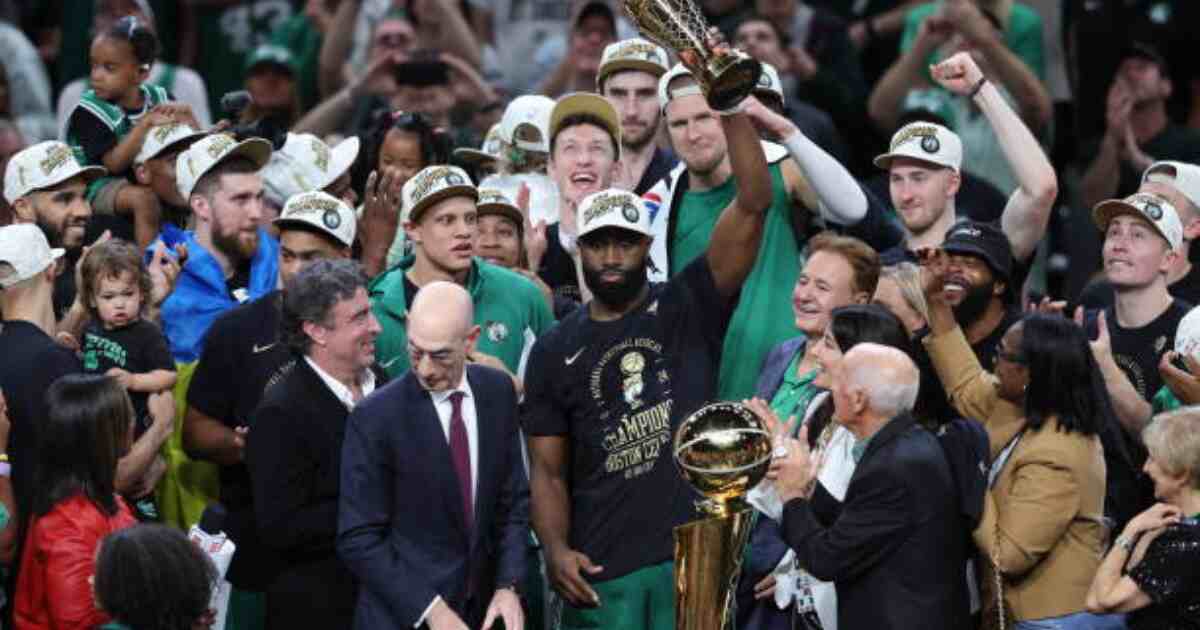
But it’s not over yet. A 0-2 deficit doesn’t signal the end for Boston. In fact, they’ve been in this position before, famously coming back from a 0-3 hole against Miami in the 2023 playoffs. With their talent and championship pedigree, they’re far from done, but it’s clear that something is off. The Knicks, led by Jalen Brunson, have capitalized on these weaknesses, showing resilience the Celtics haven’t had to deal with in recent seasons.
As Game 3 approaches at Madison Square Garden, the Celtics need to rediscover their flow. The atmosphere will be charged, and the Knicks sense an opportunity. The Celtics aren’t done yet, but they can’t afford to let their internal struggles fester much longer.
Can the Golden State Warriors Succeed Without Curry?
Thursday night revealed a harsh truth for the Warriors: life without Steph Curry is tough. With Curry sidelined due to a hamstring injury, Golden State’s offense became sluggish and predictable. They went scoreless in the first five minutes of Game 2, and Draymond Green, who was a key figure in Game 1, picked up another technical foul his fifth in the last nine games. Jimmy Butler, who had surprised many in Game 1, couldn’t find his rhythm, and even Buddy Hield seemed absent.
Historically, the Warriors have managed without Curry during the postseason. Back in 2016, they went 3-1 without him when he missed games due to injury. A few years later, with the addition of Kevin Durant, the team had even more offensive firepower to cover any gap left by Curry’s absence. But this year’s team doesn’t have the same luxury.
While the Warriors’ defense has been solid against Minnesota, their offense is floundering without their leader. Draymond has stepped in as a small-ball center, but that strategy has its limits. Jimmy Butler’s injuries have been a factor, but his struggles have been compounded by the lack of reliable support from the rest of the Warriors’ roster.
Golden State is facing a tough challenge, and while their defense has been commendable, the road to success without Curry looks much steeper this time. The loss of their star highlights just how dependent the team is on his presence—not just for scoring, but for facilitating the offense and creating space for others. Without Curry, the Warriors are still competitive, but they aren’t the same powerhouse we’ve come to expect.
The Warriors’ Future Without Curry: A Bitter Preview
The harsh truth is that the Golden State Warriors are already facing a glimpse of life post-Stephen Curry—whenever that day arrives. The 37-year-old superstar’s inevitable retirement will be a tough pill to swallow, not just for the team but for the entire organization. As they’re finding out now, life without Curry won’t be easy, and success won’t come as easily as it once did.
What Will Be the X-Factor in the Nuggets-Thunder Series?
Michael Pina: After two games in a surprisingly even series, the Oklahoma City Thunder have outshot the Denver Nuggets despite giving up 13 fewer offensive rebounds. The key? Turnovers. This statistic could play the most pivotal role in determining the outcome of the series moving forward, and it’s one that cannot be ignored.
In the first two games, Denver’s turnover rate has soared to a troubling 18.6%. For context, that’s well above the 30th-ranked turnover teams we saw during the regular season, including the chaotic style of play we witnessed from the Utah Jazz. A portion of this turnover spree can be chalked up to Oklahoma City’s defensive intensity. The Thunder excel at causing disruption they’re fast and aggressive, they clog passing lanes, confuse ball handlers, and are relentless with ball pressure and paint protection.
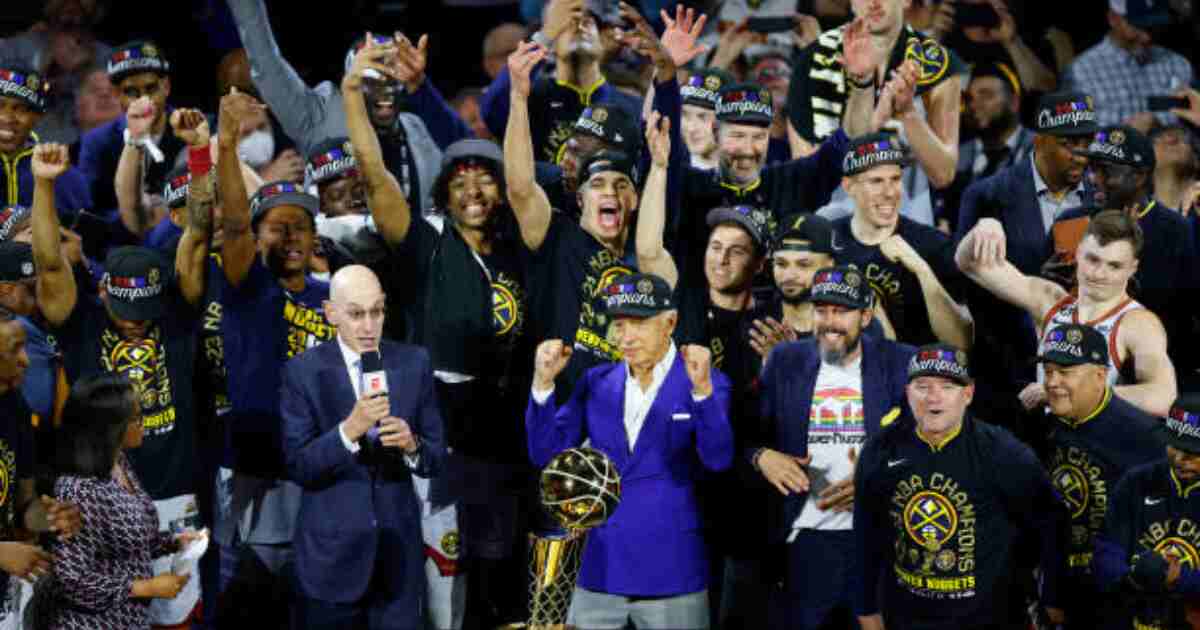
But for Denver, the math is simple: they cannot afford to hand over possessions to Oklahoma City and expect to compete. If they continue with this high turnover rate, it’s hard to see how they’ll be able to make it a series. What’s especially concerning is that this issue isn’t just occurring when the bench is on the floor it’s happening with MVP candidate Nikola Jokić on the court too.
During the regular season, Denver’s turnover rate was among the best in the league at 12.8%. Yet in this series, with Jokić on the floor, that rate has ballooned to 18.4%. That’s a recipe for disaster.
The silver lining for the Nuggets is that it’s difficult to outsmart one of the best players in the world for multiple games in a row. Jokić is known for his basketball IQ and ability to adapt. Expect him to adjust, read double-teams more efficiently, and work with his teammates to create better offensive opportunities. Even if his teammates miss open shots, the chance of an offensive rebound makes it a far better outcome than a turnover that gifts Oklahoma City easy points.
Read More: Post-Spring Recap: Michigan Football’s Key Players and Progress
Are the Cleveland Cavaliers a 64-Win Mirage or Just Injured?
Isaac Levy-Rubinett: This is a challenging question to respond to. Let’s first examine the injuries: Darius Garland has been sidelined since Game 2 of the first round due to a toe injury, while Evan Mobley and De’Andre Hunter both missed Game 2 against the Pacers after picking up injuries late in Game 1.
Cleveland was without one starter in their first loss and two starters (including their point guard and reigning Defensive Player of the Year) in their second loss. As for Game 3, the outlook is mixed, with some optimism but no guarantees. This is a tough hole to climb out of, but I’m not ready to label the Cavs as “frauds” just yet. It’s more accurate to say that they’re simply hurt.
That said, the Cavs are definitely under scrutiny. On paper, this is a championship-caliber team. They finished with 64 wins, boasted the top offense in the league, and put together two separate 15-game winning streaks much of this driven by incredible depth. This team was built to withstand injuries.
When Garland and Mobley are out, players like Donovan Mitchell and Jarrett Allen are more than capable of stepping up. Even with key players sidelined, Cleveland still has the physicality, depth, and offensive power to overcome teams like the Pacers. And for much of Game 2, they did exactly that—until a catastrophic collapse brought this tough question into the conversation.
To be transparent, I entered the playoffs with some reservations about the Cavs’ formula. Their core four players are incredibly talented, but there’s a nagging doubt about their ability to reach the championship level. They rely heavily on staggering minutes for their best players, rather than maximizing their talents in sync.
This is a critical test case for modern team-building, especially in the era of luxury tax penalties and second-apron rules. These playoffs are a referendum on Cleveland’s roster-building strategy, and with the Cavs now down 0-2 and heading to Indiana, it raises the question: Are they frauds, or are they just hurt? My real concern is that they might be both, but the injuries are making it difficult to truly gauge their potential.

